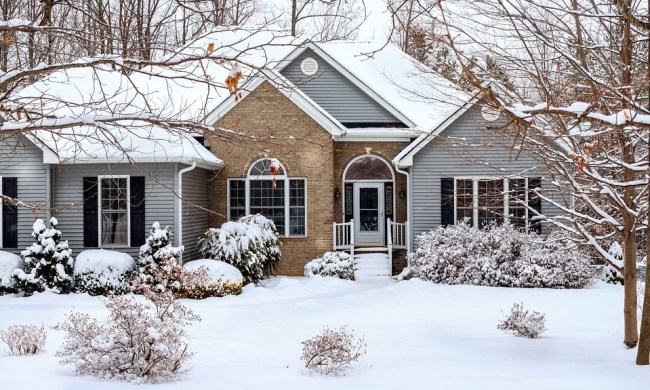If you’re tired of battling allergies and other ailments due to dust in your home, you might be considering an air purifier. But do air purifiers help with dust? A dusty home can seem like an endless nuisance, especially when it accumulates on every surface and triggers allergies or asthma. Fortunately, the best air purifiers are powerful tools for improving indoor air quality and managing dust.
Let’s explore how these devices work and whether they truly live up to the hype when it comes to reducing dust in your home.
The importance of your home’s air quality

The air quality in your home can have a significant impact on your health and well-being. Poor indoor air quality is often linked to allergies, respiratory issues, and even fatigue. When pollutants like dust, pet dander, and mold spores circulate in your home, they can exacerbate asthma or lead to chronic sinus problems.
Good air quality, on the other hand, offers numerous benefits. Cleaner air can reduce allergy symptoms, improve sleep quality, and boost overall respiratory health. For those with compromised immune systems or respiratory conditions, maintaining optimal air quality is especially crucial. Dust may seem minor, but it’s a key contributor to poor air quality and can be more harmful than it appears.
What is an air purifier, and how does it work?

An air purifier is a device designed to clean the air by removing contaminants, including dust, allergens, and pollutants. Most air purifiers operate by drawing air through a series of filters. High-efficiency particulate air (HEPA) filters are the gold standard and can trap particles as small as 0.3 microns — perfect for dust and other microscopic allergens.
Air purifiers are often rated by their Clean Air Delivery Rate (CADR), which measures their effectiveness at filtering specific contaminants like dust, pollen, and smoke. A higher CADR indicates a more efficient purifier. Some models also feature activated carbon filters for capturing odors and volatile organic compounds (VOCs), making them versatile tools for a healthier home.
Advanced air purifiers may also include UV light or ionizers to further neutralize harmful particles. While these features can enhance filtration, it’s essential to research and choose a model that best suits your specific needs.
Do air purifiers help with dust?

Yes, air purifiers do help with dust! By continuously circulating and filtering air, these devices capture and trap dust particles before they have a chance to settle on your furniture and floors. HEPA filters are particularly effective at this, as they can trap large particles (like visible dust) and tiny ones (like dust mites).
But air purifiers don’t stop at dust. They’re also excellent at filtering out other irritants, such as:
- Pollen: Beneficial for allergy sufferers, especially during peak allergy seasons.
- Pet dander: Essential for homes with furry friends, as dander can trigger allergies or asthma.
- Pollutants: Many air purifiers can remove harmful particles from smoke or traffic pollution.
- Allergens and bacteria: Some models can even reduce the presence of mold spores and germs in the air.
While air purifiers can significantly reduce airborne particles, they don’t eliminate dust entirely. Dust often originates from household activities or comes in through windows and doors, so pairing an air purifier with regular cleaning is key to maintaining a dust-free environment.
What to look for in a dust-eliminating air purifier

Not all air purifiers are created equal, and choosing the right one for your home is crucial for achieving optimal results. Here are some factors to consider:
- Size and coverage area: Match the air purifier’s capacity to the size of the room where it will be used. A model designed for smaller rooms won’t perform well in a large living area.
- CADR rating: Look for a high CADR rating for dust to ensure the purifier is effective at capturing airborne particles.
- Filter type: HEPA filters are a must for tackling dust and allergens. Some purifiers also include pre-filters to catch larger particles and extend the life of the main filter.
- Fan speed settings: Adjustable fan speeds allow you to control how quickly the air is filtered, which is especially useful during allergy season or after deep cleaning.
- Certification: Look for certifications like Energy Star or AHAM Verified to ensure the purifier meets performance and energy efficiency standards.
Investing in a quality air purifier with these features will make a noticeable difference in your home’s air quality and dust levels.
Other tips for keeping dust at bay in your home

While air purifiers are fantastic tools for reducing dust, they work best when paired with other dust-busting strategies. Here are some additional tips to keep your home dust free:
- Vacuum regularly: Use a vacuum with a HEPA filter to effectively capture dust and allergens from carpets and rugs.
- Dust with microfiber cloths: Microfiber is better at trapping dust than traditional dusters, which often just spread particles around.
- Wash bedding and curtains: These items collect dust easily, so washing your bedding and curtains frequently can help reduce dust buildup.
- Keep windows closed: While fresh air is great, open windows can let in pollen and outdoor dust.
- Minimize clutter: Fewer surfaces mean fewer places for dust to settle.
- Change HVAC filters: Replace your heating and cooling system’s air filters regularly to maintain good air circulation and filtration.
Combining these practices with a high-quality air purifier will create a cleaner, healthier environment in your home.
So, do air purifiers help with dust? Absolutely. By capturing airborne particles and improving overall air quality, air purifiers are an excellent addition to any home, especially for those struggling with allergies or respiratory issues. They’re not a stand-alone solution but work best alongside regular cleaning and dust management practices. With the right air purifier and a few additional strategies, you can enjoy a fresher, healthier home free from the burden of dust. Take the first step toward cleaner air today!




